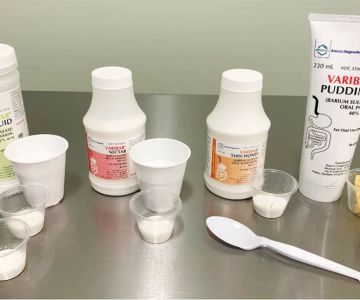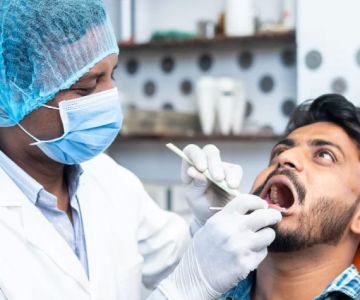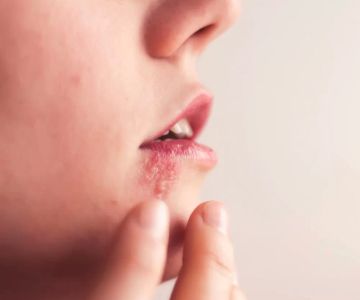How to Keep Your Teeth Healthy Between Dental Checkups
Good oral health is essential for overall well-being, yet many people struggle to maintain healthy teeth between their regular dental checkups. While a visit to the dentist is crucial for detecting problems like cavities, gum disease, or oral cancer, it’s equally important to adopt healthy habits at home. The truth is, between dental visits, your daily oral hygiene routine plays a vital role in keeping your teeth and gums in top condition. This article will discuss the best practices for maintaining your oral health, preventing common dental problems, and ensuring you’re on track for a successful dental checkup every time.
In the United States, oral health care is an integral part of overall health, and more Americans are focusing on preventive measures to avoid expensive dental treatments. Statistics from the American Dental Association show that 1 in 4 Americans are not regularly visiting a dentist. Without proper dental care between checkups, this can lead to a host of issues like cavities, gum disease, and bad breath. That’s why learning how to properly care for your teeth at home is crucial for everyone. Fortunately, keeping your teeth healthy in between dentist visits is easier than you think.
1. Brush Your Teeth Properly and Regularly
Brushing your teeth is the most basic yet most important step in keeping your teeth healthy between dental checkups. Proper brushing removes plaque, the sticky film of bacteria that builds up on your teeth and can lead to tooth decay and gum disease. The American Dental Association (ADA) recommends brushing your teeth twice a day for at least two minutes with fluoride toothpaste.
However, it’s not just about how often you brush, but how you brush. Using the correct technique is essential for ensuring your teeth are thoroughly cleaned without causing damage to your gums. A soft-bristled toothbrush is ideal because it is gentle on your gums while still being effective at removing plaque. Hold the toothbrush at a 45-degree angle to your gums and use gentle, circular motions. Brushing too hard can harm your enamel and gums, leading to sensitivity and recession.
In addition to brushing, make sure to replace your toothbrush every 3-4 months or sooner if the bristles are frayed. An old toothbrush will be much less effective at cleaning your teeth, making your efforts less worthwhile.
2. Floss Daily to Prevent Gum Disease
While brushing is essential, it can’t reach the tight spaces between your teeth where plaque and food particles can hide. This is where flossing comes in. Flossing once a day helps remove food debris and plaque from between your teeth and below the gumline, areas that your toothbrush can’t effectively clean.
The American Academy of Periodontology recommends flossing at least once a day to prevent gum disease. Flossing is easy and inexpensive, and it is one of the most effective ways to prevent cavities between your teeth. If you find traditional floss difficult to use, try floss picks, water flossers, or other alternatives that are more comfortable for you.
Remember that gum disease starts when plaque isn’t removed, causing inflammation of the gums. If left unchecked, it can lead to gingivitis, and eventually more serious periodontal disease. Flossing regularly is one of the best ways to protect your gums and teeth in between professional cleanings.
3. Eat a Tooth-Friendly Diet
Your diet plays a significant role in the health of your teeth. Certain foods, such as fruits, vegetables, dairy products, and lean proteins, can help strengthen your teeth and prevent cavities. Foods that are rich in calcium, like milk, cheese, and leafy greens, are great for building strong enamel, the protective outer layer of your teeth.
Conversely, sugary foods and drinks can increase your risk of cavities by feeding the harmful bacteria in your mouth that produce acids. These acids can erode tooth enamel and lead to tooth decay. Sticky foods, like dried fruit or candy, can also stay on your teeth longer and promote cavity formation.
For optimal oral health, aim to drink plenty of water, which helps rinse away food particles and bacteria. Additionally, try to avoid sugary beverages such as sodas and sports drinks, which can significantly increase your risk of cavities and tooth decay.
4. Use Mouthwash for Extra Protection
Mouthwash can be a helpful addition to your oral care routine. It’s an effective way to kill bacteria, reduce plaque, and freshen your breath. Some mouthwashes contain fluoride, which can help strengthen enamel and prevent tooth decay, especially if you're at higher risk for cavities. However, mouthwash should not replace brushing or flossing but should be used as a supplement to your regular oral care routine.
When selecting a mouthwash, look for products that have the ADA Seal of Acceptance, which ensures they meet the necessary standards for safety and effectiveness. If you have specific concerns, such as dry mouth or gum disease, consult your dentist to find a mouthwash that is right for you.
5. Avoid Harmful Habits That Can Damage Your Teeth
In addition to a proper oral hygiene routine, it’s crucial to avoid habits that can negatively impact your dental health. Smoking, for example, not only stains your teeth but also increases your risk of gum disease, oral cancer, and tooth loss. Chewing tobacco can also lead to tooth decay and gum disease.
Another harmful habit is teeth grinding, which often occurs during sleep due to stress. This can wear down your tooth enamel and even lead to cracked or broken teeth. If you grind your teeth at night, consider wearing a nightguard to protect your teeth from further damage.
Finally, avoid using your teeth as tools. Opening bottles, tearing packages, or biting hard objects can lead to chipped or cracked teeth. Treat your teeth with care to ensure they remain strong and healthy between checkups.
6. Stay Hydrated and Maintain Good Oral Habits
Staying hydrated is not only important for your overall health, but it also helps your mouth produce saliva, which is essential for neutralizing acids and washing away food particles. A dry mouth increases the risk of tooth decay and gum disease, so drinking enough water throughout the day is crucial for keeping your teeth healthy.
If you’re having trouble remembering to drink water, try keeping a bottle of water with you throughout the day. Additionally, you can chew sugar-free gum to stimulate saliva production and keep your mouth moist. Just be sure to choose gum that does not contain sugar, as this can contribute to plaque buildup.
Maintaining a balanced routine with proper hydration and oral habits will help keep your mouth healthy and free of harmful bacteria, ensuring you stay on track for your next dental checkup.
Conclusion: Stay Proactive About Your Oral Health
Maintaining a healthy mouth between dental checkups requires consistency, dedication, and the right habits. By brushing and flossing properly, eating a balanced diet, using mouthwash, and avoiding harmful behaviors, you can significantly reduce your risk of tooth decay, gum disease, and other oral health problems. Remember that these simple habits not only contribute to better dental health but also to your overall well-being.
If you are due for a dental checkup or need advice on improving your oral care routine, consider visiting Dentistry Toothtruth for expert tips and guidance. Make your oral health a priority, and don’t wait for a problem to arise before taking action!







 Breakwater Dental4.0 (58 review)
Breakwater Dental4.0 (58 review) Exclusively Endodontics4.0 (104 review)
Exclusively Endodontics4.0 (104 review) UofL Dental Associates - Dental Faculty Practice2.0 (36 review)
UofL Dental Associates - Dental Faculty Practice2.0 (36 review) Catonfield Dental4.0 (561 review)
Catonfield Dental4.0 (561 review) EZ Dental5.0 (53 review)
EZ Dental5.0 (53 review) Valleywise Community Health Center - Avondale4.0 (343 review)
Valleywise Community Health Center - Avondale4.0 (343 review) The Importance of Oral Health Education During Pregnancy for a Healthy Pregnancy
The Importance of Oral Health Education During Pregnancy for a Healthy Pregnancy Best Tips for Brushing Your Teeth Properly for Healthy Gums: Essential Techniques for Oral Health
Best Tips for Brushing Your Teeth Properly for Healthy Gums: Essential Techniques for Oral Health Why Skipping Dental Checkups Can Lead to Bigger Oral Health Problems
Why Skipping Dental Checkups Can Lead to Bigger Oral Health Problems Advantages of Porcelain Dental Restorations
Advantages of Porcelain Dental Restorations How Can Diabetes Cause Tooth and Gum Problems? Preventing and Managing Oral Health Issues
How Can Diabetes Cause Tooth and Gum Problems? Preventing and Managing Oral Health Issues Healthy Habits for Promoting Good Oral Health and Hygiene: Tips for a Healthy Smile
Healthy Habits for Promoting Good Oral Health and Hygiene: Tips for a Healthy Smile